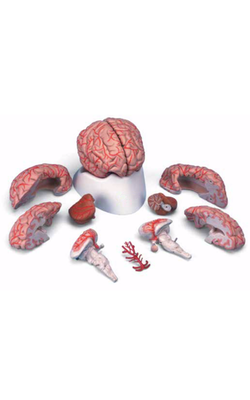Main Model

Cranial Nerves : XII Hypoglossal nerve

Hypoglossal Nerve (CN XII)
Functions: Somatic motor to the intrinsic and extrinsic muscles of the tongue (Greek glossa) - styloglossus, hyoglossus, and genioglossus.
The hypoglossal nerve (CN XII) arises as a purely motor nerve by several rootlets from the medulla and leaves the cranium through the hypoglossal canal. After exiting the cranial cavity, CN XII is joined by a branch or branches of the cervical plexus conveying general somatic motor fibers from C1 and C2 spinal nerves and somatic (general) sensory fibers from the spinal ganglion of C2. These spinal nerve fibers “hitch a ride” with CN XII to reach the hyoid muscles, with some of the sensory fibers passing retrograde along it to reach the dura mater of the posterior cranial fossa. CN XII passes inferiorly medial to the angle of the mandible and then curves anteriorly to enter the tongue.
CN XII ends in many branches that supply all the extrinsic muscles of the tongue, except the palatoglossus (which is actually a palatine muscle). CN XII has the following branches:
• A meningeal branch returns to the cranium through the hypoglossal canal and innervates the dura mater on the floor and posterior wall of the posterior cranial fossa. The nerve fibers conveyed are from the sensory spinal ganglion of spinal nerve C2 and are not hypoglossal fibers.
• The superior root of the ansa cervicalis branches from CN XII to supply the infrahyoid muscles (sternohyoid, sternothyroid, and omohyoid). This branch actually conveys only fibers from the cervical plexus (the loop between the anterior rami of C1 and C2) that joined the nerve outside the cranial cavity, not hypoglossal fibers. Some fibers continue past the origin of the superior root to reach the thyrohyoid muscle.
• Terminal lingual branches supply the styloglossus, hyoglossus, genioglossus, and intrinsic muscles of the tongue.